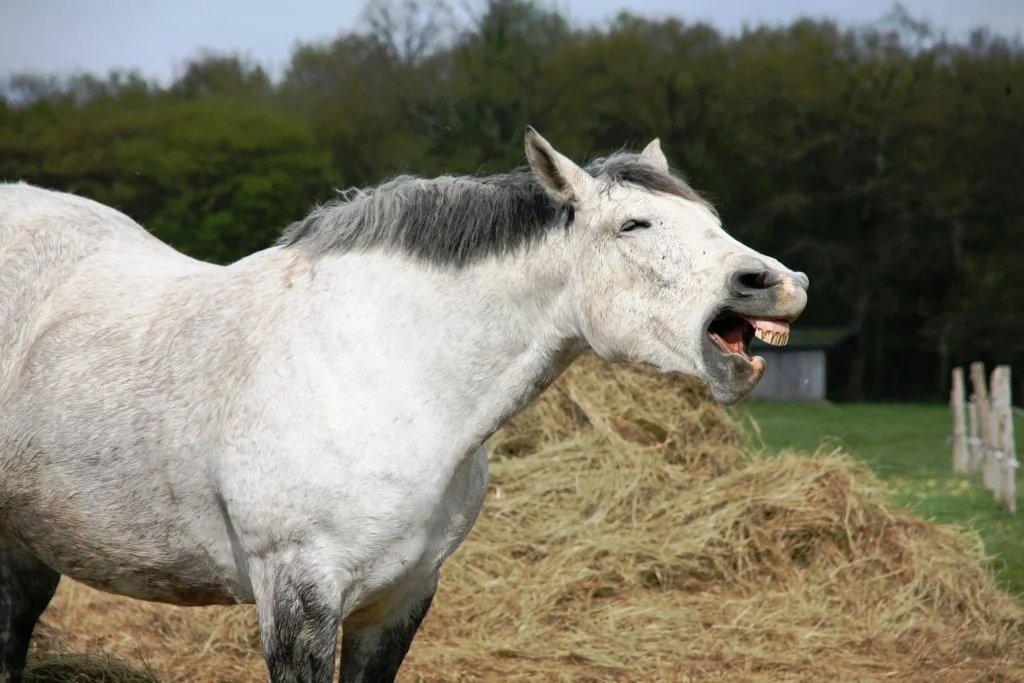Written By: Lisa Nesson, DVM
What is choke?
Esophageal obstruction (choke) is a condition in horses that occurs when food becomes lodged in a horse’s esophagus. When the food gets stuck, it blocks the esophagus, rendering the horse unable to eat or drink. Choke should be considered an emergency because affected horses may become compromised by dehydration, electrolyte imbalances, necrosis (death) of the lining of the esophagus, and aspiration pneumonia. Obstructions most commonly occur at the larynx and at the thoracic inlet. Call your veterinarian when you identify a horse that could be affected with choke, as early treatment will decrease the chance of secondary complications.
https://equineink.com/2012/01/29/what-to-do-when-your-horse-chokes/
What Causes Choke?
Choke can happen when a horse eats dry feed without producing enough saliva to soften the feed, following ingestion of a foreign body/object, or if it has a neurologic condition preventing the esophagus from a normal swallow reflex. Horses that don’t adequately chew their food or swallow too much feed at one time (sometimes known as “bolting feed”) can experience a choke episode as the food particle size maybe too large or many not be softened enough before swallowing. Pelleted feed sources are more likely to result in a choke episode than any other feed type. Dental issues, such as erupting teeth and/or deciduous caps for younger horses, missing teeth, large hooks, and/or wave mouth in older horses, can also contribute to obstructions by impairing adequate chewing.
What are the symptoms of Choke?
Symptoms of choke may include one or more of the following: Discharge of saliva and/or feed from nostril(s) and/or mouth, difficulty swallowing, disinterest in feed and water, a general dullness, coughing, making gagging noises, stretching head and neck out and low to the ground.
How to diagnose Choke?
The diagnosis of choke is accomplished by observation of the clinical signs, a complete physical exam, and definitively with the inability to pass a nasogastric tube into the stomach.
What is the treatment for Choke?
To treat a horse for choke, the veterinarian will often use sedation to allow the horse’s head to be brought lower than it’s body to prevent aspiration of mucus, feed or water into the lungs. They will pass a nasogastric tube via a nostril to the level of the obstruction, water will then be delivered through the tube via a stomach pump, the tube is slowly inserted and withdrawn to lavage the esophagus, flushing the obstruction with water to dissolve or dislodge it. Additional medications may be utilized by your veterinarian to relax a portion of the esophagus potentially allowing the obstruction to be relieved more easily.
What are complications of Choke?
Complications of choke may include: Dehydration that occurs due to the inability of the horse to ingest the saliva it is producing or the water it may try to drink. Aspiration pneumonia, which could develop within 12-48 hours after the choke was identified and/or relieved. Esophageal rupture, secondary to pressure necrosis around the obstruction or from aggressive passage of the nasogastric tube. Esophageal scarring which can lead to stricture (narrowing of the esophagus), strictures can be a cyclical problem, resulting in more obstructions and additional narrowing of the esophagus.
How can you help prevent Choke?
Things that can help prevent choke include soaking pelleted feeds and allowing enough time for the feed to swell and absorb moisture (you’ll want a sloppy, mush, gruel consistency); scheduling regular dental care, including having teeth checked once or twice a year and floated when needed; placing large, smooth rocks in feed to slow down eating; making sure the horse is not quite so hungry at mealtime by feeding some hay before graining or by feeding smaller meals more frequently; and make sure horses have access to a good quality water source.
























